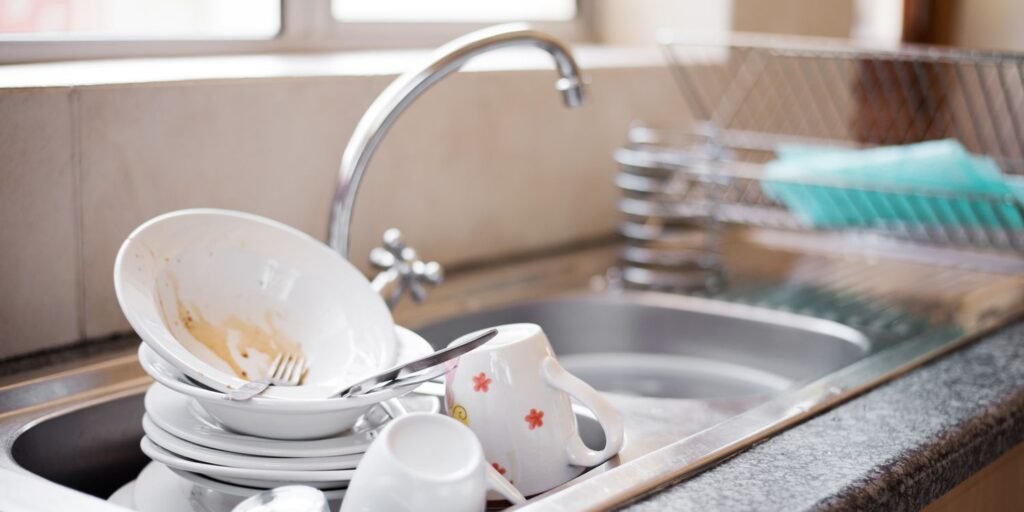Microwaves are a convenient appliance found in many communal spaces, such as offices, break rooms, and shared kitchens. However, a recent study conducted by researchers from the University of Valencia in Spain has shed light on the potential dangers lurking inside these communal microwaves.
The study, which collected samples from 30 microwaves in various settings, found that common bacteria such as Bacillus, Micrococcus, and Staphylococcus were present in all microwaves. In household microwaves, researchers observed bacteria typically found on kitchen surfaces, while shared microwaves harbored additional bacteria strains like cyanobacteria, which are known to withstand extreme conditions, including high heat and microwave radiation.
With communal microwaves used by multiple individuals and cleaned less regularly than home microwaves, the risk of bacterial contamination and cross-contamination is heightened. Leanne Blommaert, manager of research and development at the National Sanitation Foundation (NSF), emphasizes the importance of cleanliness in shared microwaves, noting that residue left behind from uncovered food can facilitate bacterial transfer between users.
Dr. Darin Detwiler, a food safety expert and professor at Northeastern University, further explains that the lack of designated cleaning responsibilities for communal microwaves allows bacteria and foodborne pathogens to accumulate over time. Additionally, the risk of cross-contamination of food allergens is a concern for individuals with food sensitivities.
To minimize the risk of food safety issues associated with shared microwaves, experts recommend following a few simple tips. First and foremost, it is essential to wash hands before and after each use of the microwave and encourage safe food-handling practices in shared spaces. Additionally, regularly cleaning the microwave door, handle, buttons, and interior with disinfectant wipes or soap can help prevent bacterial growth.
Using microwave-safe containers and covers to avoid spills and covering food while heating can also help reduce the risk of cross-contamination. Creating a set weekly cleaning schedule for communal microwaves can ensure that the appliance remains clean and safe for all users.
While communal microwaves may pose a higher risk of bacterial contamination compared to home microwaves, following these tips can help mitigate potential health hazards. By practicing good hygiene and food safety habits, individuals can continue to use shared microwaves safely and confidently. Microwaves are a convenient appliance for reheating leftovers or cooking quick meals. However, one common issue that many people face is the splattering of food inside the microwave. Not only is this unsightly, but it can also lead to the contamination of other foods being cooked in the microwave. To prevent this from happening, Chef Detwiler suggests a simple solution – covering your food with a paper towel.
When reheating food in the microwave, it is common for the moisture in the food to evaporate and create steam. This steam can cause splatters of food particles to hit the walls and ceiling of the microwave, creating a mess that is difficult to clean. By covering your food with a paper towel, you can help absorb some of the moisture and prevent it from splattering around the microwave.
In addition to preventing splatters, covering your food with a paper towel can also help to trap heat and moisture, allowing your food to cook more evenly. This can result in a more consistent temperature throughout the food, reducing the risk of cold spots where bacteria can thrive.
Another benefit of covering your food with a paper towel is that it can help to retain the natural flavors and nutrients of the food. When food is exposed directly to the heat of the microwave, it can lose some of its moisture and flavor. By covering the food with a paper towel, you can help to trap some of the moisture and prevent the food from drying out.
Overall, covering your food with a paper towel is a simple and effective way to prevent splatters and food particles from contaminating the inside of your microwave. It can also help to ensure that your food cooks more evenly and retains its natural flavors. So the next time you use the microwave, remember Chef Detwiler’s tip and cover your food with a paper towel for a cleaner and more efficient cooking experience.


